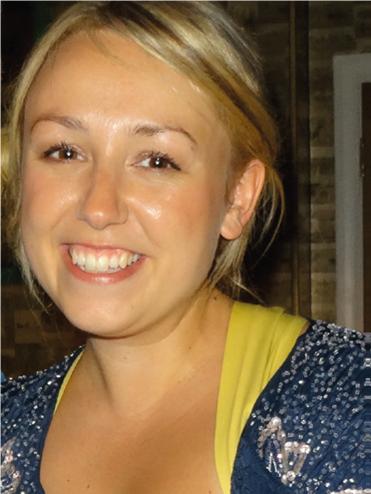How One School Is Using Mastery In English To Make Great Progress

At Rhoda Wilson’s school, a new mastery approach in English is getting great results. Here’s how it works…

- by Rhoda Wilson

Mastery is a term we teachers have heard a lot about recently, at least when it comes to maths. But what about English?
For me, the idea of spending more time focusing on fewer key concepts makes a lot of sense. In fact, “Do Less But Better” has become a mantra for my teaching this year. The issue is, perhaps, that we don’t have a clear model for what mastery in English might look like.
For those of us who remember the National Literacy Strategy, it was far from a blueprint for English mastery. Schools were required to teach a wide range of objectives, marching through a long list of text types with little time to truly embed key objectives. But now, with the slimmed down objectives of the new curriculum and text types thrown out of the window, we have a perfect opportunity to rethink the teaching of writing in our schools and establish a more joined-up curriculum.
Writing with purpose
At our school, we are now thinking in terms of ‘writing purposes’, of which we have four: Writing to Inform, Writing to Entertain, Writing to Persuade and Writing to Discuss.
Our long-term plan sees teachers focusing on the same writing purpose for the whole half term, which is essential as it allows key skills to be embedded over a longer period of time.
The problem with our previous long-term plan was that our writing curriculum jumped around too much – it didn’t allow children time to master new skills. A colleague might have been teaching a two-week story writing unit in which pupils needed to learn the new skill of punctuation. They’d just about be getting the hang of it, when suddenly the unit would end and they would have to move on to instructional writing. That tentative knowledge of speech punctuation was lost, with the teacher having to start from scratch a couple of months down the line.
In our new model, teachers still teach text types, but these have been slimmed down and matched to our writing purposes. For example, it may be that over a half term focusing on Writing to Persuade, Year 4 write a holiday brochure and a letter. As these two text types contain a lot of overlapping grammar, punctuation, and stylistic objectives, teachers are able to devote more time to ensuring key objectives are embedded and children can apply the skills they have learnt in different contexts.
Our whole-school approach
The number of writing purposes children encounter increases as they move through the school. Our KS1 pupils focus on Inform and Entertain only. Learning to Persuade is added in Years 3 and 4, and children study all four purposes in Years 5 and 6. Staff are able to choose the text types they wish to cover during each writing purpose – the only stipulation is that they must focus on the same purpose for the whole half term.
With my Year 5 class, we began the year with our space topic. Over the half term we looked at non-fiction reports about the solar system before moving on to newspaper articles about the first moon landings.
When planning, I thought very carefully about which objectives I wanted my class to master over the half-term period. For our non-fiction reports, we composed sentences with relative clauses, linked sections with fronted adverbials, and wrote descriptions using expanded noun phrases. We then repeated these objectives with our newspaper articles, since they all still applied. This meant that, instead of jumping from one concept to the next, we could embed learning over the whole half term. Pupils weren’t overwhelmed by a great wealth of new knowledge; they didn’t have have to start from scratch. Instead, they built on what they had previously learnt.
Why less is more
Each half term we choose just five or six key grammar objectives to embed within the unit, and there are never more than two outcomes (e.g. a non-fiction report and a letter). This helps everyone have a very clear idea about what the end result should be and spend time keeping lessons focused on the skills that will lead to a successful piece – e.g. developing grammar and punctuation, investigating vocabulary, unpicking high-quality examples, creating plans, and writing collaboratively with peers.
When devising writing purposes for upcoming half terms, we ensure they contain at least some similar features, which means children have the chance to apply the skills they’ve already acquired in a new context. It’s all leading to better progress and a greater likelihood that children get to experience success.
Making knowledge stick
Finally, and perhaps most importantly, my children are retaining this knowledge remarkably well. Previously, when asking classes if they knew the features of a newspaper report, they might have responded with some non-specific answers such as “vocabulary” and “capital letters and full stops”. Our writing curriculum had been so piecemeal that they were unable to pinpoint this genre, which is why they resorted to such generic responses.
This year, however, during an initial discussion on the features of persuasive writing, my Year 5 class could confidently remember every aspect of the Y4 success criteria. Undoubtedly, we were building on these skills in Year 5, but this time we had a solid foundation from which to progress.
At our school, we now have a model that allows us to build on our learning week by week, instead of wiping the slate clean at the end of each unit and starting again. I strongly believe that the simplest ideas in teaching are always the most effective, and I won’t be letting go of this approach any time soon.
Rhoda Wilson is an SLE, English Curriculum Leader and KS2 Teacher working at an inner-city school in Derby







